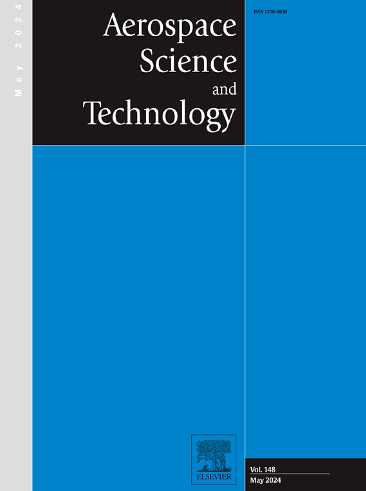From bluff bodies to optimal airfoils: Numerically stabilized RANS solvers for reliable shape optimization
IF 5
1区 工程技术
Q1 ENGINEERING, AEROSPACE
引用次数: 0
Abstract
The robustness of Reynolds-Averaged Navier-Stokes (RANS) solvers is a significant challenge in gradient-based aerodynamic shape optimization, especially when encountering shapes that produce highly separated flows. These cases often cause solvers to diverge or exhibit limit-cycle oscillations. Common practices rely on averaging non-converged solutions and often yield gradients that mislead optimizers, resulting in poor designs or failure. To address this, we extend the modified-BoostConv method to ensure full convergence of SIMPLE-based RANS solvers in such conditions, providing model-accurate gradients using the complex-step derivative technique.
Building on previous work, we introduce a novel coupling approach that resolves stability issues in earlier implementations of the modified-Boostconv method by splitting the basis construction for complex residuals into its solution (real) and gradient (imaginary) components. The gradient accuracy of averaged solutions from non-converging solvers is compared to fully converged gradients using the chaotic logistic map equation and a RANS simulation of a bluff body undergoing massive flow separation.
We then optimize a shape starting from a 80% thick bluff body, demonstrating the importance of accurate gradients. Using model-accurate gradients, we obtain an optimized 18% thick airfoil with a high lift-to-drag ratio, matching the results of optimizing a NACA 0018 airfoil and indicating the presence of a global optimum. Conversely, optimization with averaged gradients failed to improve the initial shape.
This study highlights the limitations of gradient averaging for non-converging solvers. It demonstrates that fully converged gradients reliably guide the optimizer toward attached flow regions, where RANS models are more accurate and reliable.
求助全文
约1分钟内获得全文
求助全文
来源期刊

Aerospace Science and Technology
工程技术-工程:宇航
CiteScore
10.30
自引率
28.60%
发文量
654
审稿时长
54 days
期刊介绍:
Aerospace Science and Technology publishes articles of outstanding scientific quality. Each article is reviewed by two referees. The journal welcomes papers from a wide range of countries. This journal publishes original papers, review articles and short communications related to all fields of aerospace research, fundamental and applied, potential applications of which are clearly related to:
• The design and the manufacture of aircraft, helicopters, missiles, launchers and satellites
• The control of their environment
• The study of various systems they are involved in, as supports or as targets.
Authors are invited to submit papers on new advances in the following topics to aerospace applications:
• Fluid dynamics
• Energetics and propulsion
• Materials and structures
• Flight mechanics
• Navigation, guidance and control
• Acoustics
• Optics
• Electromagnetism and radar
• Signal and image processing
• Information processing
• Data fusion
• Decision aid
• Human behaviour
• Robotics and intelligent systems
• Complex system engineering.
Etc.
 求助内容:
求助内容: 应助结果提醒方式:
应助结果提醒方式:


